Full text
PDF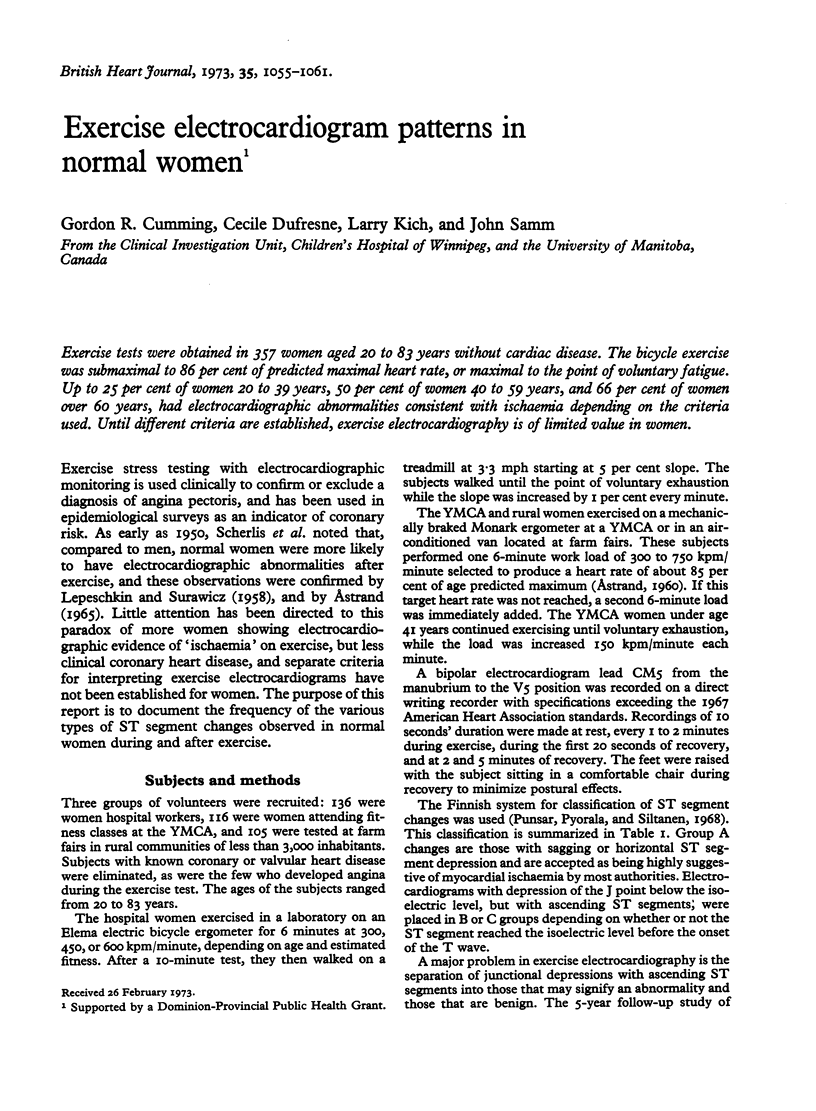
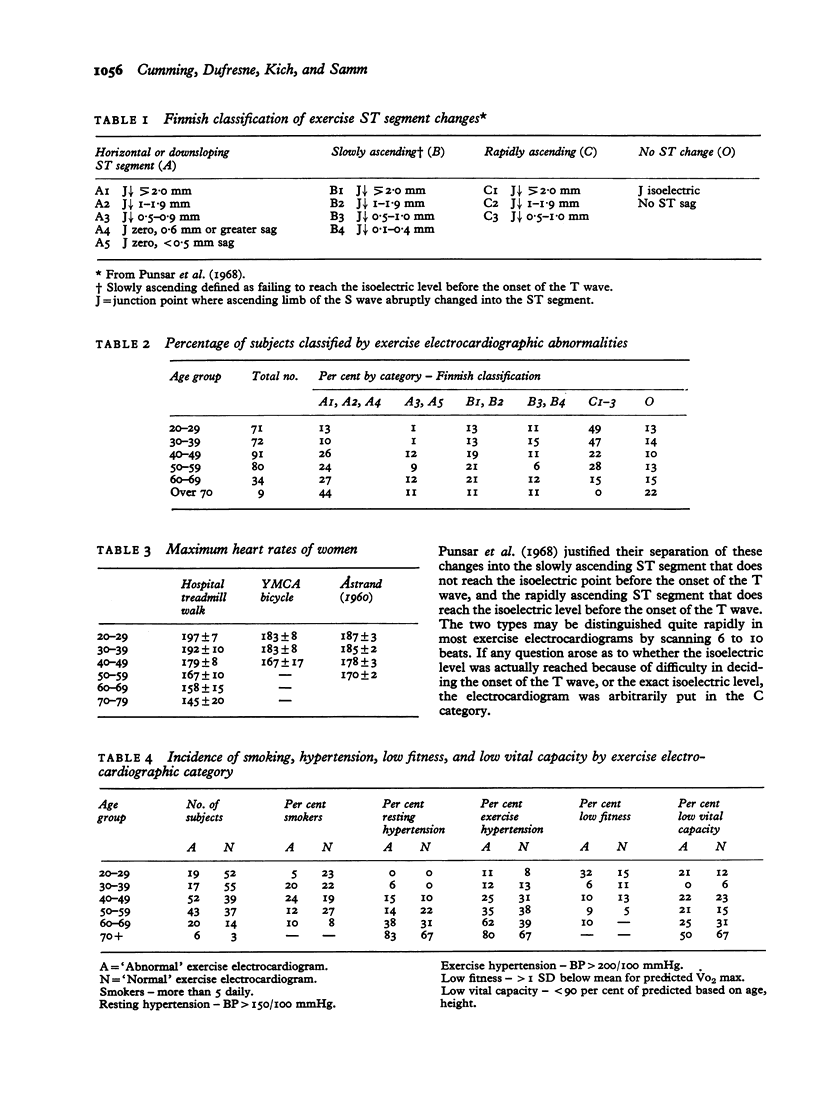
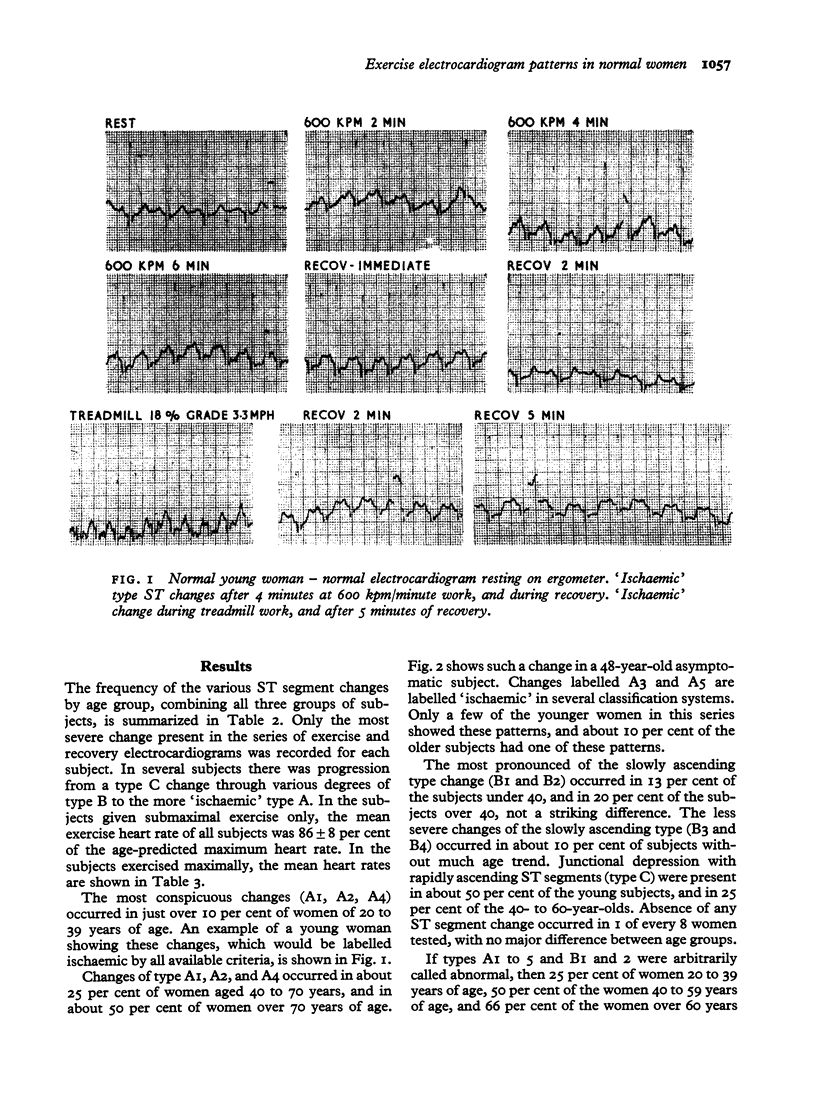
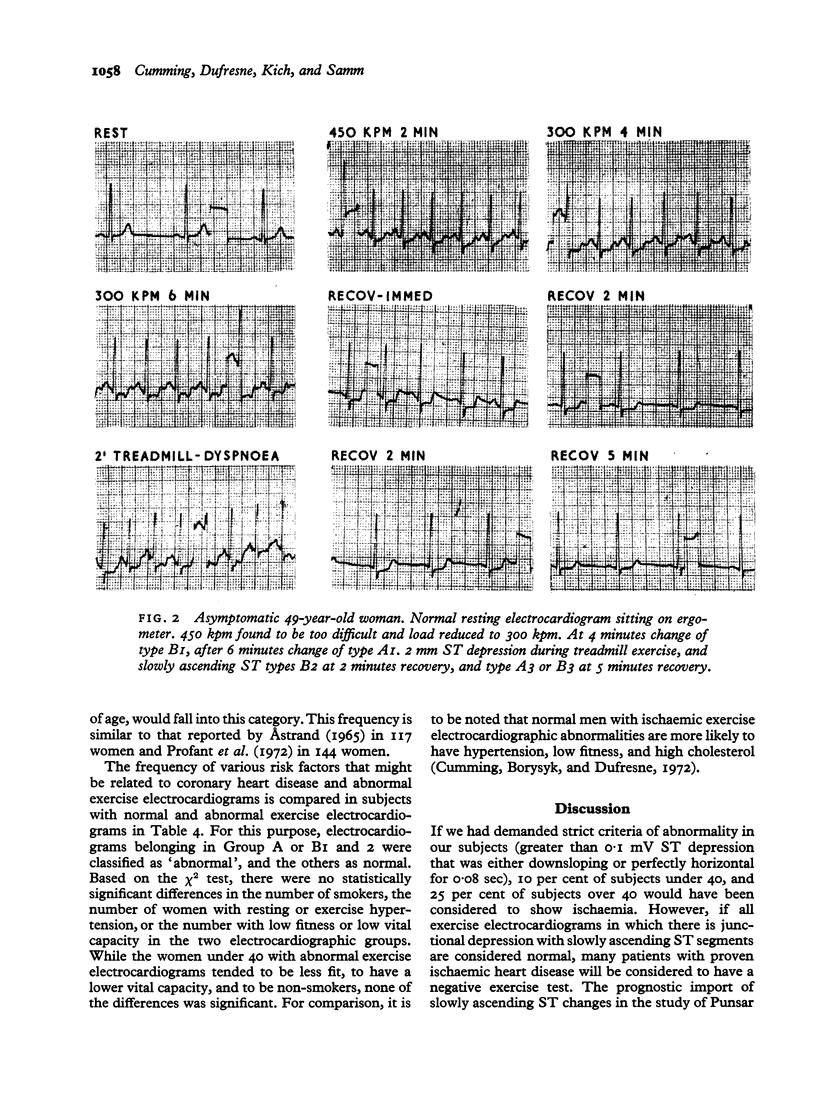

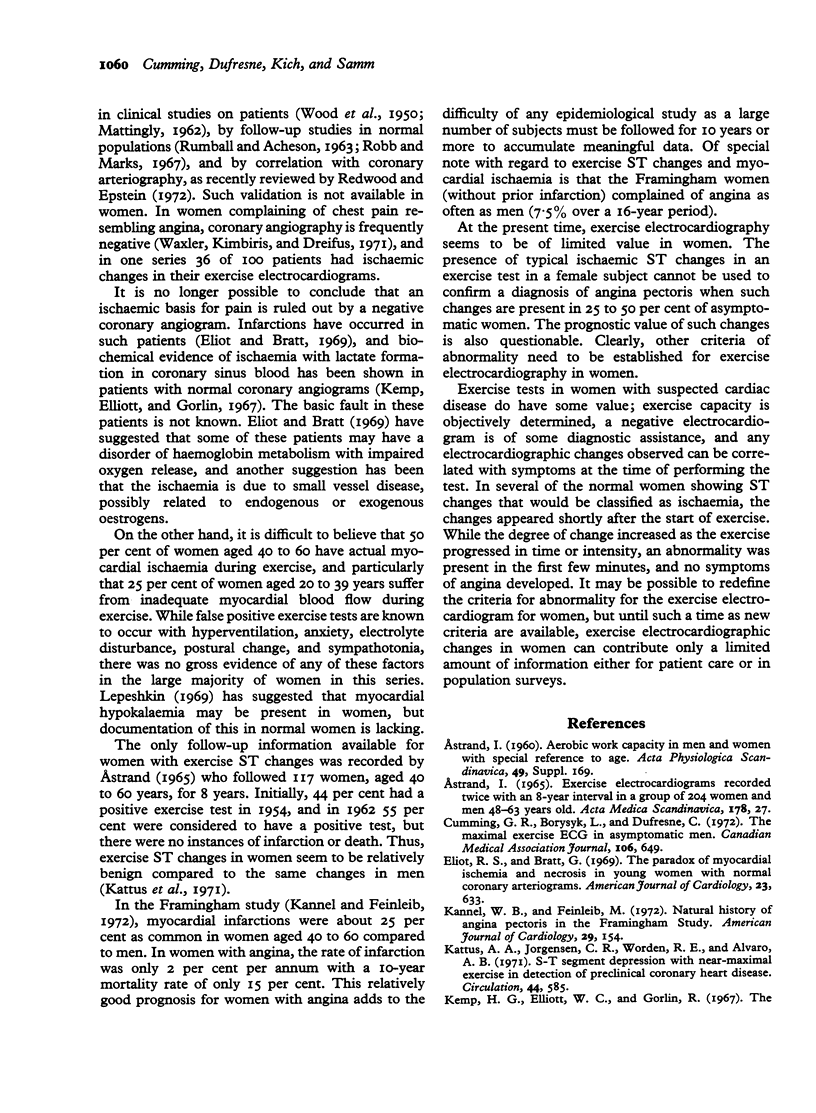
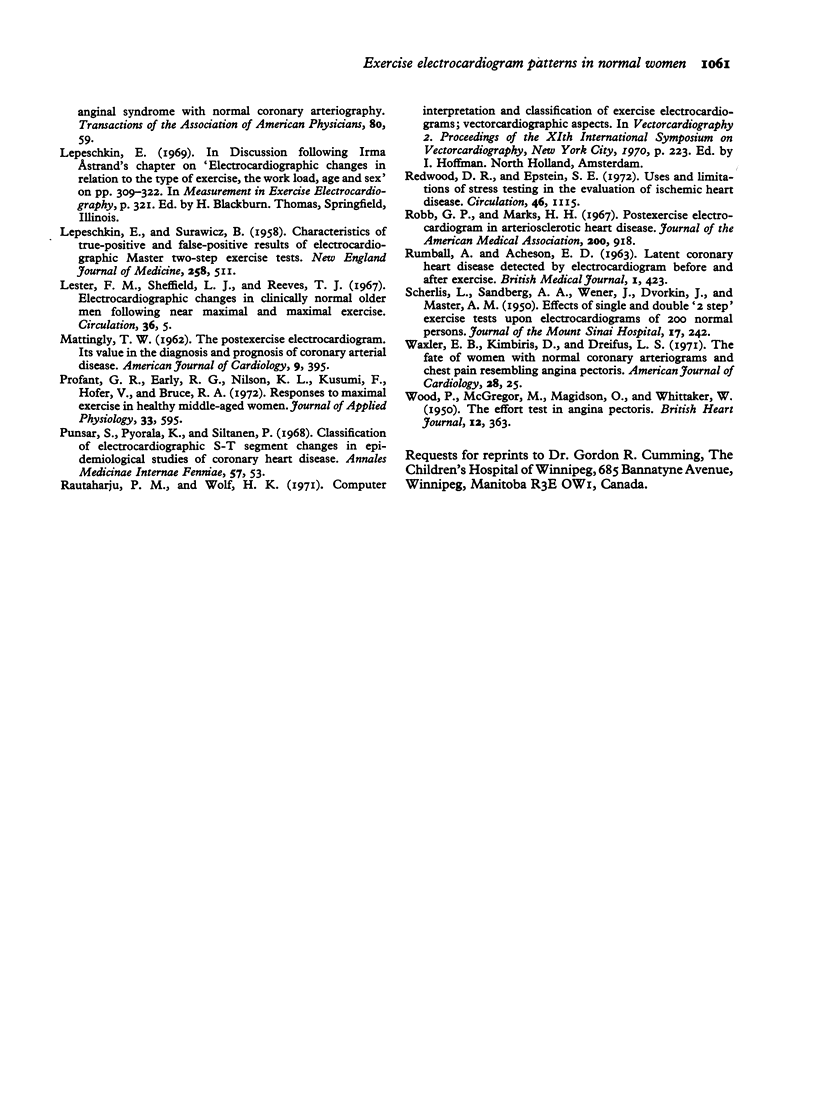
Images in this article
Selected References
These references are in PubMed. This may not be the complete list of references from this article.
- Cumming G. R., Borysyk L., Dufresne C. The maximal exercise ECG in asymptomatic men. Can Med Assoc J. 1972 Mar 18;106(6):649–653. [PMC free article] [PubMed] [Google Scholar]
- Eliot R. S., Bratt G. The paradox of myocardial ischemia and necrosis in young women with normal coronary anteriograms. Relation to abnormal hemoglobin-oxygen dissociation. Am J Cardiol. 1969 May;23(5):633–638. doi: 10.1016/0002-9149(69)90023-x. [DOI] [PubMed] [Google Scholar]
- Kattus A. A., Jorgensen C. R., Worden R. E., Alvaro A. B. S-T-segment depression with near-maximal exercise in detection of preclinical coronary heart disease. Circulation. 1971 Oct;44(4):585–595. doi: 10.1161/01.cir.44.4.585. [DOI] [PubMed] [Google Scholar]
- Kemp H. G., Elliott W. C., Gorlin R. The anginal syndrome with normal coronary arteriography. Trans Assoc Am Physicians. 1967;80:59–70. [PubMed] [Google Scholar]
- Lester F. M., Sheffield L. T., Reeves T. J. Electrocardiographic changes in clinically normal older men following near maximal and maximal exercise. Circulation. 1967 Jul;36(1):5–14. doi: 10.1161/01.cir.36.1.5. [DOI] [PubMed] [Google Scholar]
- MATTINGLY T. W. The postexercise electrocardiogram. Its value in the diagnosis and prognosis of coronary arterial disease. Am J Cardiol. 1962 Mar;9:395–409. doi: 10.1016/0002-9149(62)90157-1. [DOI] [PubMed] [Google Scholar]
- Profant G. R., Early R. G., Nilson K. L., Kusumi F., Hofer V., Bruce R. A. Responses to maximal exercise in healthy middle-aged women. J Appl Physiol. 1972 Nov;33(5):595–599. doi: 10.1152/jappl.1972.33.5.595. [DOI] [PubMed] [Google Scholar]
- Punsar S., Pyöräla K., Siltanen P. Classification of electrocardiographic S-T segment changes in epidemiological studies of coronary heart disease. Preliminary evaluation of a new, modified classification, with particular reference to the prognostic significance of different types of S-T segment changes. Ann Med Intern Fenn. 1968;57(2):53–63. [PubMed] [Google Scholar]
- RUMBALL A., ACHESON E. D. Latent coronary heart disease detected by electrocardiogram before and after exercise. Br Med J. 1963 Feb 16;1(5328):423–428. doi: 10.1136/bmj.1.5328.423. [DOI] [PMC free article] [PubMed] [Google Scholar]
- Redwood D. R., Epstein S. E. Uses and limitations of stress testing in the evaluation of ischemic heart disease. Circulation. 1972 Dec;46(6):1115–1131. doi: 10.1161/01.cir.46.6.1115. [DOI] [PubMed] [Google Scholar]
- Robb G. P., Marks H. H. Postexercise electrocardiogram in arteriosclerotic heart disease. Its value in diagnosis and prognosis. JAMA. 1967 Jun 12;200(11):918–926. [PubMed] [Google Scholar]
- SCHERLIS L., SANDBERG A. A., WENER J., DVORKIN J., MASTER A. M. The effects of the single and double two-step exercise tests upon the electrocardiograms of 200 normal persons. J Mt Sinai Hosp N Y. 1950 Nov-Dec;17(4):242–253. [PubMed] [Google Scholar]
- WOOD P., McGREGOR M., MAGIDSON O., WHITTAKER W. The effort test in angina pectoris. Br Heart J. 1950 Oct;12(4):363–371. doi: 10.1136/hrt.12.4.363. [DOI] [PMC free article] [PubMed] [Google Scholar]
- Waxler E. B., Kimbiris D., Dreifus L. S. The fate of women with normal coronary arteriograms and chest pain resembling angina pectoris. Am J Cardiol. 1971 Jul;28(1):25–32. doi: 10.1016/0002-9149(71)90030-0. [DOI] [PubMed] [Google Scholar]





